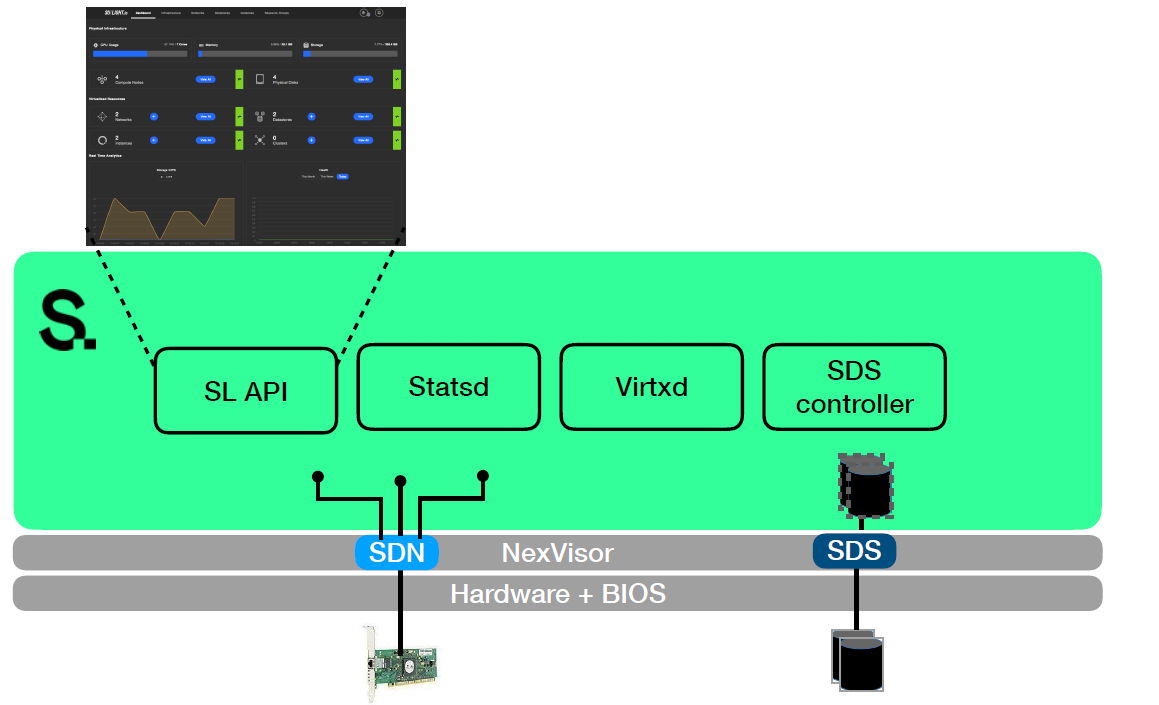Sunlight Enterprise Software Platform User Guide
Welcome to the user guide for configuring and managing your Sunlight Enterprise Software Platform. Here you can find information on the system's architecture and how to configure your environment to achieve the best performance and reliability.
The Sunlight Enterprise Software Platform is a fully hyper-converged infrastructure system optimised to provide high-performance IO for both networking and storage traffic to and from tenant virtual machines. The Sunlight Enterprise Software Platform is comprised of a lightweight virtualization hypervisor called the NexVisor, a distributed block storage volume management layer based on the mature Sunlight Integrated Storage technology; and a Sunlight cluster controller that runs as a tenant Virtual Service on top of one of the NexVisors.

The diagram above depicts the high level logical components. All of the NexVisor nodes are centrally managed by a highly available service named virtxd, that tracks and controls nodes. The Sunlight controller is positioned above the infrastructure level and manages orchestration of common components such as Users and Roles, Virtual Server instances, Virtual Block Devices, Virtual Networks and OS templates. Each NexVisor node has access to a dedicated number of physical network interfaces, depending on the hardware platform over which a Software Defined Networking technology operates, in order to connect distributed virtual network interfaces into isolated subnets without any dependency on VLAN support from a switch.
Every NexVisor node manages its own local Network, Storage controllers and attached Block devices. The storage drives are automatically clustered into a pool of storage infrastructure that can be partitioned into physical datastores with configurable redundancy and capacity properties. This guide provides information on how to configure and access computate, network, and storage resources when deploying services on the platform.
The User Guide contains the following sections: